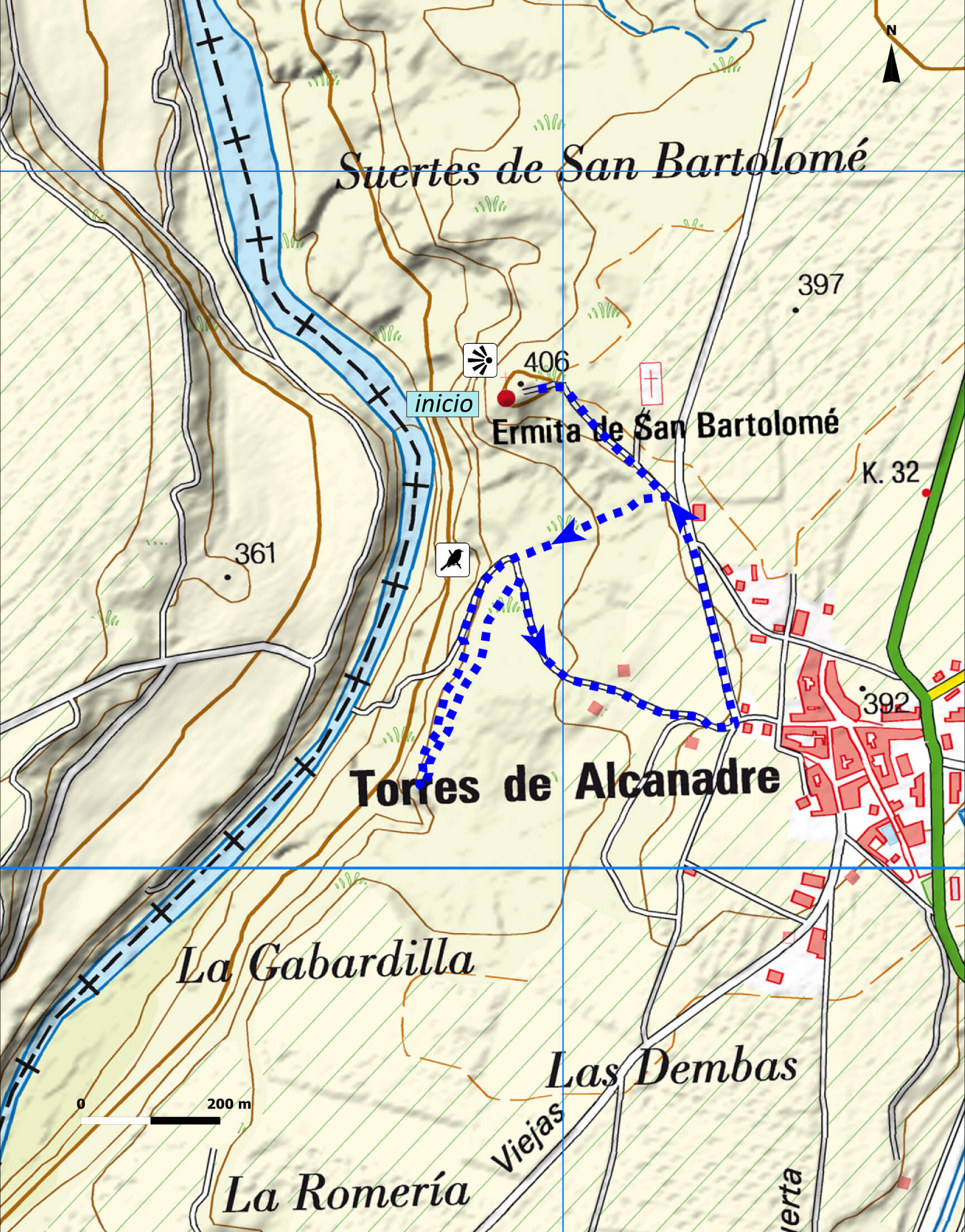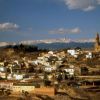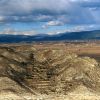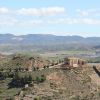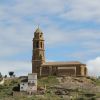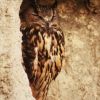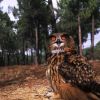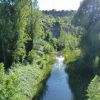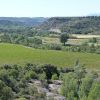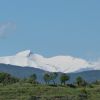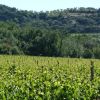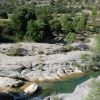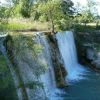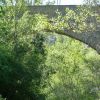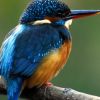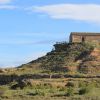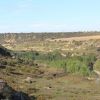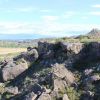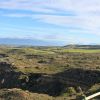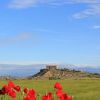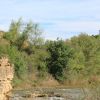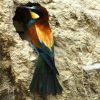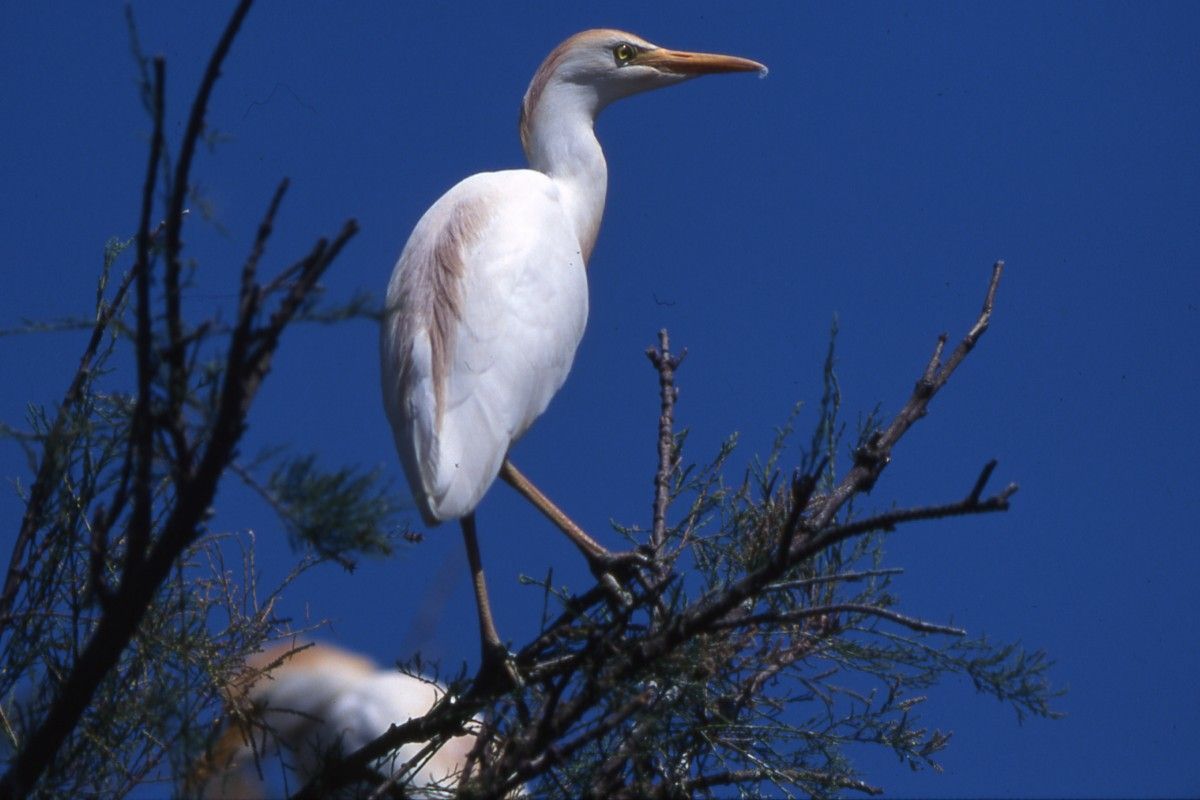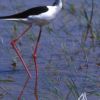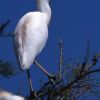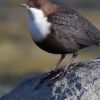Ecosistema fluvial
Route Cinca River Thickets. Castejón del Puente
Technical information
Type of route: return hiking route
Departure point: Castejón del Puente
KM: 9,6
Duration: 2 h 30 min
Gradient: 70 m
MIDE: 1-2-2-2
Difficulty:
Access
On highway A-22 take exit 51 to Castejón del Puente. In Castejón del Puente, take the third exit at the entrance roundabout and after 415 metres take a forest trail towards the right. Continue for approximately 2 km and park the car at the start of riverbank woodland. Warning: with heavy rains the track can be impracticable for any type of vehicle. Continue on foot for 2,4 km along a small footpath, going through some small meanders until you reach Cinca river.
Descripción de la ruta
From the roundabout at the entrance of Castejón del Puente, we take exit heading North, on foot or in a four-wheeled car, across a holm-oak woodland and a low-growth cultivated area, until the begining of the rivebank woodland, where we find the parking area. From here, the route continues on the pebble beaches through the riverbank wood. The route ends after the ravine of Valpregona. In the banks nest the Western Jackdaw, Black Wheatear, Blue Rock Thrush, Common Kestrel and the Egyptian Vulture. In winter, in the evening, we can observe and listen to the Eagle Owl. During the migratory passages (March) it is common to observe the Osprey.
Main Species
Representative bird: Eagle Owl (Bubo bubo)
Residents: Little Grebe, Mallard, White Stork, Grey Heron, Little Egret, Cattle Egret, Western Marsh Harrier, Eurasian Buzzard, Common Kestrel, Red-legged Partridge, Common Moorhen, Water Rail, Green Woodpecker, Great Spotted Woodpecker, Lesser Spotted Woodpecker, Hoopoe, Grey Wagtail, Pied Wagtail, Black Wheatear (rare), Blackbird, Mistle Thrush, Sardinian Warbler, Eurasian Blackcap, Tits, Rock Sparrow, Goldfinch, European Greenfinch, European Serin, Linnet, Cirl Bunting.
Summer migrants: Egyptian Vulture, Black Kite, Eurasian Scops Owl, Red-necked Nightjar, Eurasian Wryneck, European Bee-eater, Black-eared Wheatear, Common Nightingale, Garden Warbler, Eurasian Reed Warbler, Great Reed Warbler, Melodious Warbler, Spotted Flycatcher.
Winter visitors: Great Cormorant, Eurasian Sparrowhawk, Northern Goshawk, Merlin, Black-crowned Night Heron, Song Thrush, European Robin, Chaffinch, Brambling, Reed Bunting.
Passage migrants: Anatidae (specially Teal and Northern Shoveler), Purple Heron, Little Bittern, Common Crane, Osprey, Crakes (Little Crake y Spotted Crake –rares-), Northern Wheatear, Common Whitethroat, Willow Warbler, Pied Flycatcher.
Photo gallery
Map
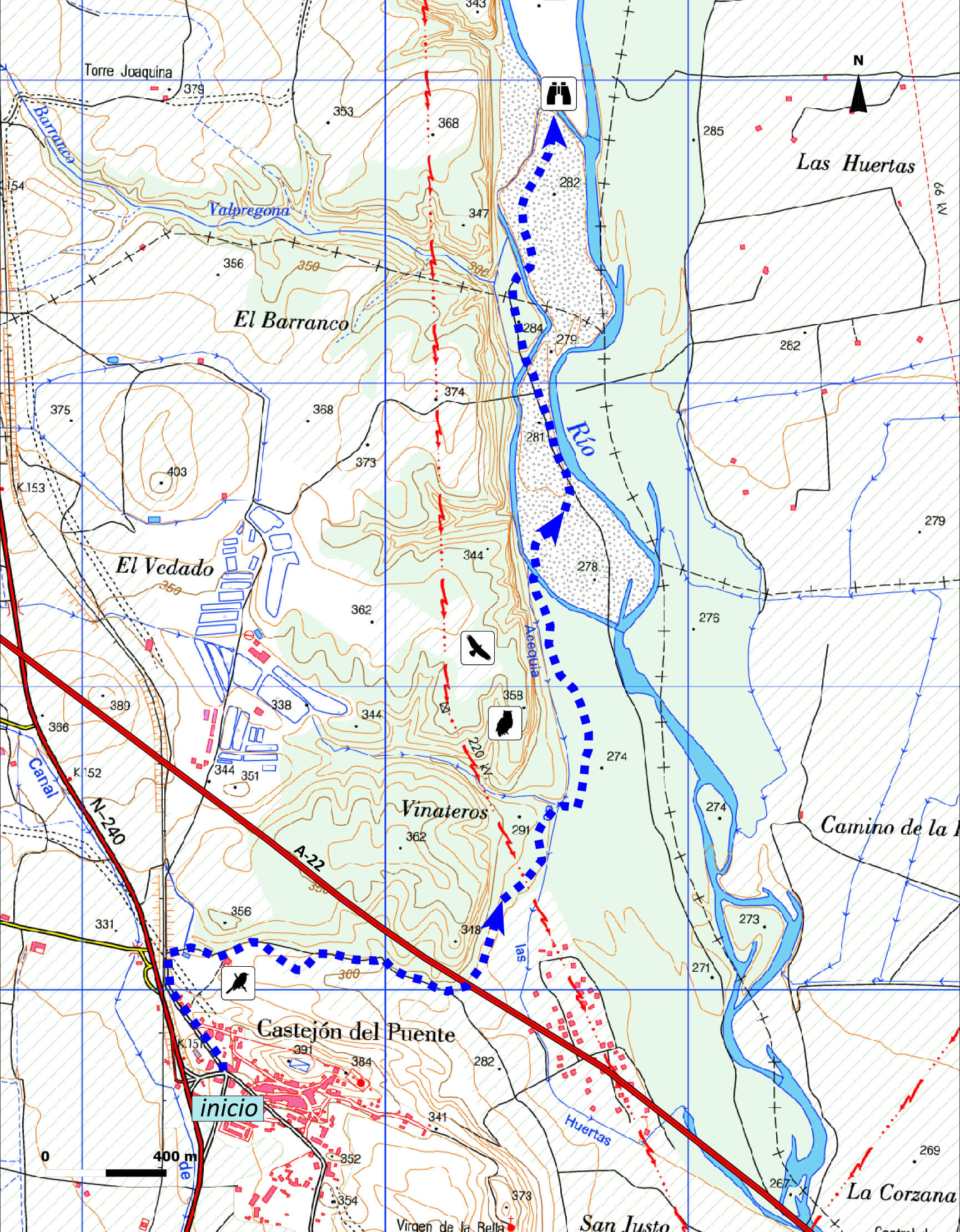
Route Vero Riberbank. Castillazuelo
Technical information
Type of route: circular hiking route
Departure point: Castillazuelo
KM: 3,4
Duration: 1 h
Gradient: 10 m
MIDE: 1-2-2-1
Difficulty:
Access
From Barbastro, take the road A-1232 towards Alquézar, after 5 km you will get to Castillazuelo. In Castillazuelo, park in the municipal parking lot, opposite to the fronton court and beside the pools. Then pass the centre of the village, on the bridge across the river. If you start the route along the right bank of the river towards the West, you will end up at the parking. Signposted route (“Rals Vals de Castillazuelo”).
Route description
The circular route begins in the core of Castillazuelo, after crossing the Vero River bridge. The route (marked as “Rals Vals de Castillazuelo”) runs along the right bank of the Vero River, heading West until you reach a waterfalls area, where you cross again and head back to the town along the opposite bank. The route runs along the shore of Vero River in a landscape where garden areas and riverside woodlands contrast with oak woodlands and cultivated fields (cereals and almonds). In this section, the Kingfisher nests in the hollows of the rocks.
Main Species
Representative bird: Kingfisher (Alcedo atthis)
Residents: Mallard, Grey Heron, Red Kite, Eurasian Buzzard, Eurasian Sparrowhawk, Common Kestrel, Red-legged Partridge, Common Moorhen, Water Rail, Green Woodpecker, Hoopoe, Kingfisher, Great Spotted Woodpecker, Lesser Spotted Woodpecker (rare), Hoopoe, Grey Wagtail, Pied Wagtail, Blackbird, Mistle Thrush, Sardinian Warbler, Eurasian Blackcap, Tits and Chickadees, Rock Sparrow, Goldfinch, European Greenfinch, European Serin, Linnet, Cirl Bunting, Corn Bunting.
Summer migrants: Egyptian Vulture, Black Kite, Eurasian Scops Owl, Red-necked Nightjar, Eurasian Wryneck, European Bee-eater, Black-eared Wheatear, Common Nightingale, Garden Warbler, Eurasian Reed Warbler, Great Reed Warbler, Melodious Warbler, Spotted Flycatcher, etc.
Winter visitors: Northern Goshawk, Merlin, White-throated Dipper (rare), Song Thrush, European Robin, Chaffinch, Brambling, Hawfinch, Rock Bunting, Yellowhammer, Reed Bunting.
Passage migrants: Common Crane, Northern Wheatear, Common Whitethroat, Willow Warbler, Pied Flycatcher,etc.
Photo gallery
Map
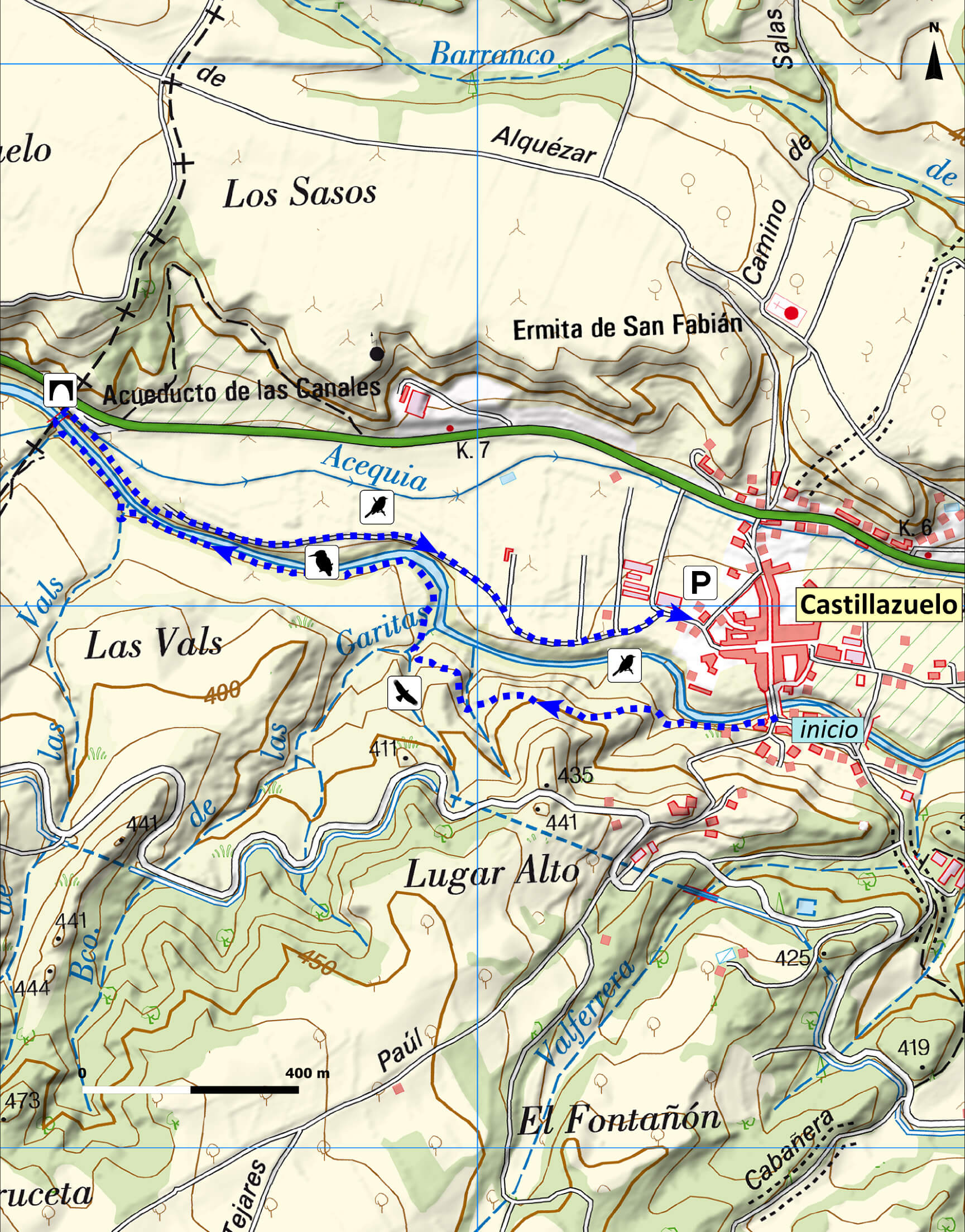
Route Alcanadre Riverbank. Torres de Alcanadre
Technical information
Type of route: circular hiking route
Departure point: Torres de Alcanadre
KM: 2,3
Duration: 40 min
Gradient: 30 m
MIDE: 1-2-2-1
Difficulty:
Access
From highway A-22 take exit to Liesa/Torres de Montes (A-1222) until Blecua (10 km). Then take A-1217 until Torres del Alcanadre (16 km). In Torres del Alcanadre, park your car in the town and lead up to the hermitage where begins the itinerary.
Route description
The route begins at the Hermitage of San Bartolomé, in the highest part of Torres del Alcanadre. The 2 km circular route accesible on foot or by bike, goes by the riverside of the Alcanadre River in a landscape of cultivated fields (lucern and corn) and riverbank woodland. During spring and summer it is possible to observe Blue Rock Thrush, Alpine Chough, Western Jackdaw, Common Kestrel, Short-toed Snake Eagle, Golden Oriole and even European Roller.
Main Species
Representative bird: European Bee-eater (Merops apiaster)
Residents: Mallard, Grey Heron, Red Kite, Eurasian Buzzard, Eurasian Sparrowhawk, Common Kestrel, Red-legged Partridge, Common Moorhen, Water Rail, Eagle Owl (rare), Long-eared Owl, Little Owl, Barn Owl, Green Woodpecker, Hoopoe, Kingfisher, Cuckoo, Great Spotted Cuckoo, Grey Wagtail, Pied Wagtail, Blackbird, Mistle Thrush, Black Redstart, Sardinian Warbler, Dartford Warbler, Paridae, Alpine Chough, Western Jackdaw, Rock Sparrow, Goldfinch, European Greenfinch, European Serin, Linnet, Cirl Bunting, Corn Bunting.
Summer migrants: Purple Heron, Egyptian Vulture, Short-toed Snake Eagle, Black Kite, Eurasian Scops Owl, Red-necked Nightjar, Eurasian Wryneck, European Bee-eater, European Roller, Black-eared Wheatear, Common Nightingale, Western Orphean Warbler, Subalpine Warbler, Spectacled Warbler, Eurasian Reed Warbler, Great Reed Warbler, Melodious Warbler, Spotted Flycatcher,etc
Winter visitors: Northern Goshawk, Merlin, Lapwing, Song Thrush, European Robin, Chaffinch, Brambling, Hawfinch, Rock Bunting, Reed Bunting.
Passage migrants: Common Crane, Northern Wheatear, Common Whitethroat, Common Redstart, Willow Warbler, Pied Flycatcher, etc.
Photo gallery
Map
